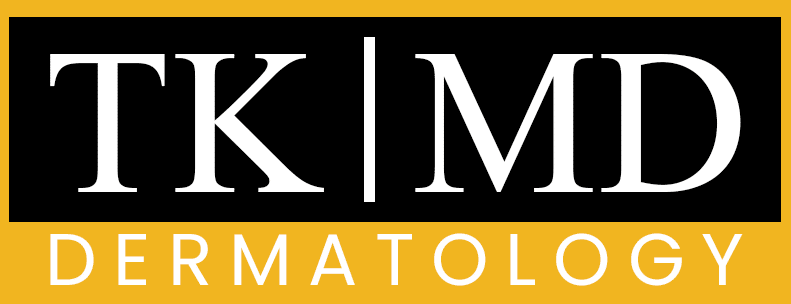Imagine dealing with the painful rash of shingles, wondering if there’s a way to speed up recovery. Shingles, caused by the varicella-zoster virus, is a condition that affects many, bringing with it discomfort and pain. The rash and blisters it causes can be distressing, but there are methods to potentially reduce its duration and severity.
For those suffering from shingles, finding relief is a priority. While there’s no complete cure for shingles, exploring both medical treatments and natural remedies can provide fast relief from symptoms. According to health experts, early intervention is crucial. You can learn more about natural treatments for shingles on Healthline.
Key Takeaways
- Understanding shingles and its causes is crucial for effective management.
- Early intervention can significantly reduce the severity of shingles symptoms.
- Both medical treatments and natural remedies can provide relief from shingles.
- Managing shingles effectively can prevent complications like postherpetic neuralgia.
- A combination of treatments can help minimize discomfort and speed up healing.
Understanding Shingles: What You Need to Know
Understanding the basics of shingles is crucial for managing its symptoms and reducing the risk of complications. Shingles is caused by the reactivation of the varicella-zoster virus, which initially causes chickenpox.
What Causes Shingles?
The varicella-zoster virus remains dormant in nerve cells after a person recovers from chickenpox. Years later, it can reactivate, traveling down nerve fibers to cause pain and a characteristic rash on the skin.
Common Symptoms and Signs
The hallmark symptoms of shingles include a painful, blistering rash that typically appears on one side of the body or face. The rash consists of blisters that eventually crust over and heal within 2-4 weeks. Other symptoms may include fever, headache, and fatigue.
- Painful red bumps that quickly develop into fluid-filled blisters
- The shingles rash typically follows nerve pathways
- Additional symptoms may include fever and headache
Can You Really Cure Shingles in 3 Days?
While the idea of curing shingles in 3 days may seem ambitious, early treatment can significantly impact the duration and severity.
Setting Realistic Expectations
It’s crucial to understand that shingles is a viral infection caused by the varicella-zoster virus, the same virus that causes chickenpox. The goal of early treatment is not necessarily to “cure” shingles in the traditional sense but to reduce its severity and prevent complications.
The Importance of Early Treatment
Starting antiviral therapy within 3 days of the rash appearing can significantly reduce the severity of symptoms and the risk of further complications. According to research, early intervention is critical for maximizing the effectiveness of antiviral medications. Some key benefits of early treatment include:
- Reducing the risk of developing postherpetic neuralgia, a painful long-term complication.
- Preventing the spread of the rash to vulnerable areas, such as the eyes.
- Limiting nerve damage through prompt antiviral medication.
As highlighted in a study published on PMC, timely treatment can make a significant difference in patient outcomes.
| Timeframe | Effectiveness of Antiviral Therapy | Risk of Complications |
|---|---|---|
| Within 3 days | High | Low |
| Beyond 3 days | Reduced | Higher |

Medical Treatments for Fast Shingles Relief
Managing shingles requires a multifaceted approach that includes antiviral therapy and effective pain relief measures. Medical treatments aim to reduce the severity and duration of the illness.
Antiviral Medications
Antiviral medications are a crucial part of shingles treatment. They help reduce the severity and duration of the illness if started early. Commonly prescribed antivirals include acyclovir, valacyclovir, and famciclovir.

Pain Management Prescriptions
Pain management is critical in treating shingles, as the condition can cause severe discomfort. Prescriptions may include anticonvulsants like gabapentin, which is effective for nerve pain associated with shingles. Tricyclic antidepressants, such as amitriptyline, can help manage shingles pain and improve sleep.
Topical analgesics containing lidocaine or capsaicin provide localized relief without systemic side effects. For severe cases, corticosteroid injections may be considered to reduce inflammation and alleviate neuralgia.

How to Cure Shingles in 3 Days: Action Plan
To effectively cure shingles in 3 days, a well-structured action plan is essential. This plan involves a combination of medical treatment, self-care, and monitoring of symptoms. By following this plan, you can alleviate the symptoms of shingles and promote healing.
Day 1: Immediate Response Steps
On the first day, it’s crucial to start antiviral medication and cover the rash to prevent spreading the virus. Use a non-stick dressing if the area isn’t covered by light clothing. Avoid using antibiotic creams, gels, and sticking plasters on the blisters, as they may slow down the healing process.
Day 2: Continuing Treatment
Continue with antiviral medication and monitor your symptoms. Look for signs of improvement, such as reduced pain and decreased inflammation. Adjust your pain management strategies as needed.
Day 3: Monitoring Progress
By the third day, assess your symptom improvement compared to day one. Check for positive signs like crust formation on blisters. Continue with pain management and evaluate for potential complications. Some key actions to take include:
- Completing the third day of antiviral medication
- Evaluating symptom improvement
- Continuing pain management strategies
- Assessing for potential complications like widespread rash or severe pain
- Applying healing moisturizers to crusted areas

Natural Remedies to Speed Up Recovery
Incorporating natural remedies into your treatment plan can help enhance the body’s immune response to the varicella-zoster virus. These remedies can be used in conjunction with medical treatments to alleviate symptoms and support the healing process.
Healing Baths and Cool Compresses
Healing baths and cool compresses can provide relief from the discomfort and pain associated with shingles. Oatmeal baths, in particular, can help soothe itchy skin, while cool compresses can reduce pain and inflammation.
Soothing Lotions and Creams
Soothing lotions and creams, such as those containing aloe vera or capsaicin, can help alleviate pain and discomfort. For natural creams for shingles relief, consider products with anti-inflammatory and antiviral properties.

Herbal Supplements That May Help
Certain herbal supplements may help support the body’s immune system and reduce the severity of shingles. These include Echinacea, lemon balm, and licorice root, which have antiviral properties. Additionally, adaptogenic herbs like ashwagandha may help manage stress, which can worsen shingles outbreaks.
Some supplements that may be beneficial include:
- Echinacea to support immune function
- Lemon balm for its antiviral activity
- Licorice root for its anti-inflammatory properties
- L-lysine to inhibit viral replication
- Vitamin C, zinc, and vitamin D to support overall immune function
It’s essential to consult with a healthcare provider before starting any herbal supplements, especially if taking prescription medications.
Diet and Lifestyle Changes for Faster Healing
Dietary modifications can be a key factor in alleviating the symptoms of shingles and promoting faster healing. A well-balanced diet supports the immune system in fighting the virus more effectively.
Foods That Boost Immune Function
Consuming foods rich in vitamins and minerals can help boost the immune system. Foods high in antioxidants, such as fruits and vegetables, play a crucial role in supporting the body‘s natural defense mechanisms.
Foods to Avoid During Shingles Outbreak
Certain foods can exacerbate the condition and prolong recovery. It’s advisable to limit or avoid foods high in arginine (like chocolate, nuts, and seeds), refined sugars, and saturated fats, as they may support viral replication or suppress immune function.
Managing Shingles Pain and Discomfort
Shingles pain can be debilitating, but effective management strategies exist. Managing pain is crucial for the healing process.
Topical Pain Relief Options
Topical treatments like creams and gels can alleviate pain when applied directly to the affected area.
Stress Reduction Techniques
Stress can worsen symptoms. Mindfulness, deep breathing, and gentle yoga reduce stress, promoting recovery by supporting the body’s healing system.
When to See a Doctor Immediately
Certain symptoms and conditions warrant urgent medical evaluation for people with shingles. While shingles can be managed at home in many cases, there are situations where immediate medical attention is necessary to prevent serious complications or to manage severe symptoms.
Warning Signs of Complications
It’s crucial to be aware of the warning signs that indicate potential complications of shingles. These include severe pain, vision problems, or difficulty hearing. If you experience any of these symptoms, seek medical help promptly. For more information on skin-related conditions, you can visit this resource on managing skin rashes.

Special Considerations for High-Risk Groups
Certain individuals are at a higher risk of developing severe shingles or experiencing complications. These include people over 50 years old, those with a weakened immune system due to conditions like HIV/AIDS or cancer, and individuals taking immunosuppressive medications. Pregnant women and people with certain pre-existing conditions also require special care. For these high-risk groups, prompt medical evaluation is essential to mitigate potential risks.
Preventing Shingles Recurrence
Effective prevention of shingles recurrence involves understanding the available vaccination options and adopting certain lifestyle habits.
Vaccination Options
The shingles vaccine is a crucial tool in preventing the recurrence of shingles. The Centers for Disease Control and Prevention (CDC) recommends that adults aged 50 years and older receive the shingles vaccine, Shingrix, to help prevent shingles and its complications. It’s especially important for individuals with a weakened immune system to consult their healthcare provider about getting vaccinated.
If you’re wondering where to get vaccinated, you can search online for “shingles vaccine near me” to find nearby locations that offer the vaccine.
Lifestyle Factors for Prevention
Besides vaccination, several lifestyle factors can help prevent shingles recurrence. Maintaining a strong immune system through regular exercise, adequate sleep, and stress management is fundamental. A diet rich in immune-supporting nutrients like vitamin C, vitamin D, zinc, and antioxidants also plays a crucial role.
- Maintaining strong immune function through regular exercise, adequate sleep, and stress management.
- A diet rich in immune-supporting nutrients including vitamin C, vitamin D, zinc, and antioxidants.
- Stress management techniques practiced regularly.
- Avoiding excessive sun exposure and using sun protection.
- Maintaining good control of chronic conditions like diabetes.
- Regular health check-ups.
- Avoiding close contact with people experiencing active infections.
Conclusion
While a complete cure for shingles in 3 days is challenging, effective management is achievable. Early intervention with antiviral treatment and pain management strategies can minimize the severity of the rash caused by the varicella-zoster virus. For people over 50, this approach is particularly important. Understanding that shingles is caused by the reactivation of the virus that causes chickenpox helps in managing expectations. Vaccination remains a crucial preventive measure against shingles for people at risk. By adopting these strategies, people can reduce their suffering and prevent long-term complications.


